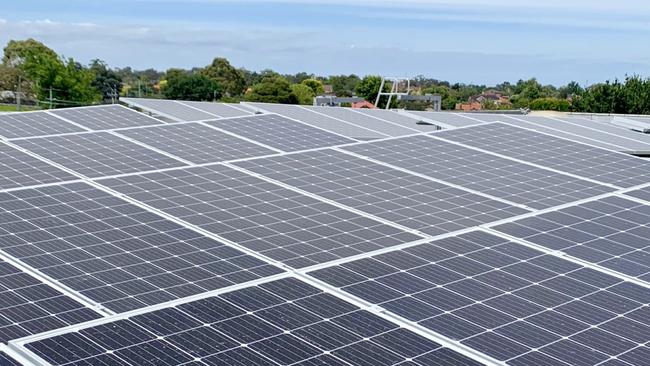Progress on $21bn renewables export project
An ambitious $21bn plan to export renewable power from WA’s north to Indonesia has taken a step towards approval.

The proponents of an ambitious $21 billion plan to export renewable power from WA’s north to Indonesia and other regional neighbours have taken the next step to winning approval for the plan, with the WA Environmental Protection Agency opening up the project for public comment.
Documents lodged with the EPA show the proponents of the massive project, called the Asian Renewable Energy Hub, believe they can supply power into Indonesia at below $US67 a megawatt hour and to Singapore for less than $US90 a megawatt hour — despite its reliance on thousands of kilometres of undersea cable to Indonesia and Singapore.
The consortium — which includes Australia’s CWP Renewables, wind turbine manufacturer Vestas, Intercontinental Energy and Macquarie Group — plans to install 7.5 gigawatts of wind turbines, and more than 3.5GW of solar arrays 220km west of Port Hedland, and 270km southwest of Broome — just south of WA’s famous Eighty Mile Beach.
Up to half of the energy generated would be made available to WA miners in the region, with the rest destined for export to Indonesia and Singapore, which the consortium says are looking to increase the renewable energy used in their economies but lack easy means to produce it themselves.
The documents reveal the enormous scale of the project, which plans to install 1743 wind turbines, each up to 260m tall, a series of 180ha solar panel arrays, dozens of substations scattered across a 606,000ha site, and four power-carrying cables leading to the coast, and then to offshore markets.
Project manager Andrew Dickson told The Australian the partners were also shifting its focus towards the production of hydrogen using renewable energy generated by its massive banks of wind turbines and solar panels. The consortium had identified a second site in the Pilbara, suitable for hydrogen generation, and were firming up plans for a “green hydrogen” hub.
While Mr Dickson said the consortium’s work in progressing its planning, including environmental approvals, was running on track, it would be some time before its partners began to seek the estimated $21bn needed to finance the giant renewable energy project — worth about 20 per cent of Australia’s current electricity generation capacity.
Mr Dickson said the consortium intends to close out its approval processes first, and sign offtake contracts for the project’s power, before getting on with the business of locking down financing for the project.
The group has previously said it hopes to lock away its environmental approvals by the end of this year, and financing by 2021. Construction would be conducted over six to seven years.


To join the conversation, please log in. Don't have an account? Register
Join the conversation, you are commenting as Logout